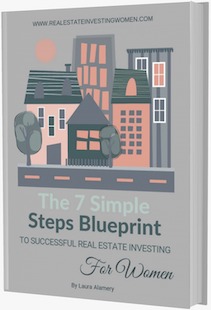Senior housing investments are crucial as our population ages. With the baby boomer generation reaching retirement age, the demand for suitable living arrangements is skyrocketing. These investments not only provide financial opportunities in the senior housing industry but also meet the pressing needs of older adults seeking comfort and care through senior housing solutions, senior housing units, and senior housing facilities.
Historically, many seniors faced challenges in finding appropriate housing options due to demographic trends, demographic burden, investment shortage, and investment pace. Today, innovative solutions are emerging to address these issues. Developers and investors are stepping up to create communities that offer safety, social interaction, and healthcare access. This blog will explore how senior housing investments can effectively cater to an aging population while benefiting investors and society alike.
Key Takeaways
-
Understand the growing demand for senior housing as the population ages, and consider investing in this sector to meet future needs.
-
Stay informed about current trends in senior housing investments, such as technology integration and community-based living, to make smarter investment choices.
-
Focus on addressing the specific housing needs of seniors by offering diverse living options that cater to varying levels of care and independence.
-
Anticipate population growth and its impact on senior housing, ensuring your investment strategies align with demographic shifts.
-
Explore investment opportunities in senior living that prioritize quality of life enhancements, such as wellness programs and social activities for residents.
-
Be aware of the challenges in housing development for seniors, and seek innovative solutions that can improve living conditions and attract potential residents.
Understanding Senior Housing Demand
Demographic Shifts
The U.S. population is aging rapidly. By 2030, all Baby Boomers will be over 65. This shift means that more seniors will require housing options tailored to their needs. The number of people aged 65 and older is expected to reach 83 million by 2050, impacting housing models. This demographic change creates a significant demand for senior housing supply.
As the population ages, the types of housing needed will vary. Many seniors prefer independent living arrangements. Others may need assisted living or memory care facilities. Understanding these preferences is crucial for meeting their needs.
Diverse Preferences
Seniors have diverse preferences when it comes to housing. Some want to live independently in housing models designed for active lifestyles. These communities often offer amenities like fitness centers and social activities. Independent living allows seniors to maintain their autonomy while enjoying social interactions.
On the other hand, some seniors require more support. They may need assistance with daily activities such as bathing or medication management. Assisted living facilities provide this support while allowing residents to retain some independence. Memory care units are also available for those with cognitive impairments.
Recognizing these varied needs helps developers create appropriate senior housing inventory.
Economic Factors
Economic conditions impact seniors’ ability to afford housing options. Many rely on fixed incomes from pensions or Social Security benefits. Rising costs of living can strain these budgets.
Housing prices have increased significantly in recent years. This trend makes it harder for seniors to find affordable housing solutions. In many areas, rental prices exceed what many retirees can pay comfortably.
Government programs exist to assist low-income seniors in finding affordable housing. However, these resources may not meet the growing demand effectively.
Investors should consider economic trends when planning new developments. Understanding local market conditions can guide decisions about where to build and what types of housing are needed.
Trends in Senior Housing Investments
Active Adult Communities
Active adult communities are on the rise. Many seniors seek lifestyle-oriented living options. These communities provide amenities like fitness centers, swimming pools, and social activities. They allow seniors to maintain an active lifestyle while enjoying a sense of community.
The senior housing market has adapted to this demand. Developers focus on creating spaces that promote social interaction and wellness. By 2025, it is projected that more than 20 million seniors will live in these types of communities. This shift reflects a broader trend in senior housing investments.
Technology Integration
Technology plays a vital role in modern senior housing. Many facilities now incorporate smart home features. These include emergency alert systems and health monitoring devices. Such advancements enhance safety for residents.
Connectivity is also crucial. Wi-Fi access allows seniors to stay connected with family and friends. This helps reduce feelings of isolation, which can be common among older adults. The integration of technology in senior housing supports both independence and safety.
Memory Care Facilities
Memory care facilities address specific needs for seniors with cognitive impairments. These facilities offer specialized programs tailored for individuals with conditions like Alzheimer’s disease or dementia. Trained staff provide support and create safe environments.
The demand for memory care services is increasing. As the population ages, more individuals require these specialized services. The current investment trend shows a substantial need for new memory care facilities across the country.
Investors recognize this growing market opportunity. They are directing funds toward developing more memory care units. This trend highlights the investment shortage in this area.
Investment Requirements
Investing in senior housing requires substantial capital. Developers must navigate zoning laws and building regulations. Securing financing can be challenging but essential for meeting the housing inventory needs.
Current investment pace indicates a strong interest in expanding senior housing options. Investors focus on both new builds and renovations of existing properties. The goal is to meet the rising demand from an aging population.
Overall, the senior housing outlook remains positive. With the right strategies, investors can capitalize on this growing sector.
Addressing Housing Needs for Seniors
Aging in Place
Seniors prefer to stay in their homes as they age. Senior housing solutions should focus on features that allow them to do this. Modifications such as grab bars, wider doorways, and non-slip flooring can make homes safer. Smart home technology also plays a role. Systems that monitor health or control lighting can enhance safety and comfort.
These changes help seniors maintain independence. Aging in place reduces the need for costly institutional care. It allows seniors to remain connected to their communities. Social connections are vital for mental well-being.
Universal Design Principles
Designing accessible living environments is crucial. Universal design principles ensure that homes meet diverse needs. Features like step-free entrances and adjustable countertops benefit everyone, not just seniors. These elements make spaces usable for all ages and abilities.
Incorporating natural light and open spaces promotes a positive atmosphere. Good lighting helps prevent falls, which are common among older adults. Accessible kitchens and bathrooms improve daily living experiences.
The senior housing sector increasingly embraces these principles. Developers are recognizing the importance of creating inclusive environments. This approach not only benefits seniors but also enhances property values.
Multi-Generational Living
Multi-generational living arrangements are gaining popularity. Families see value in sharing space and resources. This setup allows seniors to live with family while maintaining some independence.
Such arrangements provide emotional support and reduce loneliness. They also help families share caregiving responsibilities. Financially, it can be more affordable than traditional senior housing options.
Communities are adapting to this trend by offering flexible layouts. Homes designed for multiple generations often include separate entrances or living spaces. This flexibility meets the diverse needs of families today.
Senior Housing Developments
The pace of senior housing development is increasing to address these needs. Developers focus on creating mixed-use communities that combine housing with services. This model promotes convenience and accessibility for seniors.
Data shows a growing demand for senior housing units across the country. As the population ages, the senior housing industry must adapt quickly. Innovative projects cater to various income levels and preferences.
Investments in senior housing facilities reflect this trend. The goal is to create welcoming environments where seniors can thrive. Communities that prioritize senior housing options will attract more residents.
Planning for Population Growth
Future Housing Demands
Population growth creates a significant demand for housing. The U.S. Census Bureau projects that by 2030, all baby boomers will be over 65 years old. This demographic shift leads to an incredible demand growth in senior housing. The population aged 65 and older is expected to reach approximately 78 million by 2035. This marks a substantial increase from the current figures.
The growth rate of this age group poses challenges. Many seniors prefer to age in place but may require specialized housing options eventually. The gap between current housing supply and future needs continues to widen. Developers must consider this trend when planning new projects.
Sustainable Housing Solutions
Sustainable senior housing solutions are essential. These solutions should focus on both affordability and accessibility. Incorporating green building practices can help reduce costs in the long run. For example, energy-efficient designs lower utility bills for residents.
Communities should also integrate services within these housing developments. Access to healthcare, transportation, and social activities improves quality of life for seniors. Mixed-use developments can address multiple needs in one location. This approach fosters community engagement and reduces isolation among seniors.
Collaboration with Local Governments
Collaboration with local governments is crucial for effective planning. Zoning regulations often limit the types of housing that can be built. By working together, developers and officials can create policies that support senior housing development.
Local governments can incentivize builders through tax breaks or streamlined permitting processes. This encourages more developers to invest in senior housing projects. Municipalities should assess their zoning laws regularly to ensure they meet current demands.
Public forums allow communities to voice their needs regarding senior housing. Gathering input helps shape future developments that align with resident desires.
Investment Opportunities in Senior Living
Emerging Markets
The senior living industry is expanding rapidly. By 2030, the number of older adults in the U.S. will reach 73 million. This growth creates a strong investment need in senior housing. Emerging markets include suburban areas with high populations of retirees. Cities like Austin, Texas, and Orlando, Florida, show significant demand for senior living options.
Investors should pay attention to regions with aging populations. States such as Florida and Arizona rank high for their retiree communities. They offer great opportunities for new developments. Investors can also look at urban areas where younger people are moving back home. These cities often have older family members who need care.
Returns on Investment
Active adult and assisted living communities promise solid returns on investment. The average occupancy rate for these facilities is around 85%. This figure indicates a healthy demand for senior housing options. Moreover, the market is expected to grow by 3% annually over the next decade.
Investments in assisted living facilities can yield higher returns compared to traditional real estate. The average cost of assisted living ranges from $3,500 to $6,000 per month, depending on location and services provided. These costs present a steady revenue stream for investors.
Active adult communities attract seniors looking for independence without the responsibilities of homeownership. Amenities such as fitness centers and social activities appeal to this demographic. Investors can capitalize on this trend by developing properties that cater to active lifestyles.
Healthcare Partnerships
Partnerships with healthcare providers enhance investment potential in senior housing. Integrated living solutions improve residents’ quality of life and attract more tenants. Collaborating with healthcare organizations allows facilities to offer comprehensive care options.
For example, some communities provide on-site medical services or wellness programs. These features not only meet the needs of residents but also increase occupancy rates. Investors benefit from this model as it creates a competitive edge in the market.
Healthcare partnerships also help address the growing demand for specialized care. As seniors age, many require tailored services such as memory care or rehabilitation. Facilities that offer these services can see higher demand and better financial performance.
Investing in senior housing requires understanding demographic trends and market demands. The combination of emerging markets, strong returns on investment, and strategic partnerships makes this sector appealing.
Adapting to Seniors’ Preferences
Survey Insights
Gathering insights from seniors is crucial. Conducting surveys helps understand what they truly want. Many seniors express a desire for social activities and community engagement. Others prioritize safety features in their living spaces.
Surveys can reveal preferences for amenities like fitness centers, gardens, and recreational areas. These insights guide developers in creating spaces that resonate with the aging population. As the boomer generation ages, their needs will shape future housing investments.
Tailored Designs
Designing housing for seniors requires thoughtful consideration. Spaces should reflect their lifestyle choices. For example, open floor plans promote ease of movement. Accessible kitchens and bathrooms enhance daily living.
Incorporating natural light and outdoor spaces can improve mental well-being. Features like grab bars and non-slip flooring increase safety. Tailored designs meet both practical needs and personal tastes. This approach attracts seniors looking for comfortable and functional homes.
Flexible Arrangements
Flexibility is vital in senior housing options. Many older adults experience changing health and mobility needs. Housing must adapt to these changes over time.
Implementing flexible living arrangements is one solution. Units can be modified as residents’ needs evolve. For instance, adding additional units for caregivers or family members can provide support without relocation.
Communities that offer various living options appeal to a broader range of seniors. This adaptability ensures that residents feel secure in their homes, no matter their circumstances.
Community Engagement
Creating vibrant communities enhances the quality of life for seniors. Opportunities for social interaction are essential. Organized events can foster friendships among residents.
Community gardens, book clubs, and fitness classes encourage participation. Engaging programs keep seniors active and connected to each other. This sense of belonging improves overall well-being.
Financial Considerations
Investors must also consider financial aspects when adapting to seniors’ preferences. Understanding market demands helps in making informed decisions. Projections indicate a growing need for senior housing as the boomer generation ages.
Developers should analyze regional demographics and trends in senior living preferences. This data informs investment strategies and project planning, ensuring sustainability.
Enhancing Quality of Life for Seniors
Community Engagement
Many seniors thrive in environments that promote community engagement. Social activities and wellness programs play a vital role in senior housing. These programs encourage interaction among residents. Activities like game nights, fitness classes, and art workshops help build friendships.
Wellness programs can also focus on physical health. They can include exercise routines tailored to seniors’ abilities. This promotes not just physical fitness but also mental well-being. Engaging with others reduces feelings of isolation. It fosters a sense of belonging, which is crucial for the senior population.
Combatting Loneliness
Loneliness affects many seniors. It can lead to depression and other health issues. Senior housing should create opportunities for residents to connect. Regular social events and group outings can help combat this problem.
Creating shared spaces is essential. Common areas encourage residents to gather and socialize. Staff can facilitate connections between individuals who share similar interests. This approach leads to meaningful relationships that improve mental health.
Outdoor Spaces
Incorporating outdoor spaces into senior living environments is important. Nature has a calming effect on people of all ages, especially the aging population. Access to gardens, walking paths, and green spaces enhances well-being.
Outdoor activities can include gardening clubs or nature walks. These provide physical benefits while promoting social interactions. Fresh air and sunlight contribute positively to mood and overall health.
Development Needs
The National Investment Center (NIC) reports a growing need for senior housing development. As the senior population increases, so does the demand for suitable living options. New developments must focus on enhancing quality of life.
Designing units with accessibility features is crucial. These include wider doorways, grab bars, and non-slip floors. Such designs cater to the needs of an aging population, ensuring safety and comfort.
Inventory Challenges
Current inventory may not meet the demands of many seniors seeking housing. The NIC MAP Vision data shows a significant gap in available units for this demographic. Developers must prioritize creating diverse options that cater to different preferences and needs.
Investment in senior housing is not just about numbers; it’s about improving lives. By focusing on community engagement, combating loneliness, and enhancing outdoor spaces, developers can create environments where seniors thrive.
Challenges in Housing Development
Regulatory Hurdles
Regulatory hurdles often slow down housing development. Local zoning laws can restrict where senior housing projects can be built. These regulations may require lengthy approval processes. Developers must navigate complex permitting procedures. This can delay projects and increase costs. For example, some areas impose strict height or density restrictions. These rules limit the number of units that can be constructed. As a result, fewer affordable housing options become available.
Financial Constraints
Financial constraints pose another challenge for developers. Building new housing requires significant capital investment. Many developers struggle to secure funding for affordable senior living options. High construction costs make it difficult to keep prices low. Investors often seek higher returns, which can lead to increased rents. According to the National Association of Home Builders, construction costs rose by 20% from 2020 to 2021 alone. This surge affects the overall housing stock available for seniors.
Community Resistance
Community resistance can impact new development efforts. Some residents fear that senior housing will lower property values. Others worry about increased traffic or changes in neighborhood character. Education and outreach are vital in addressing these concerns. Developers must engage with local communities early in the process. Hosting informational meetings can help clear misconceptions. Sharing benefits of senior housing, such as increased local business activity, is essential.
Innovative Housing Models
Developers can explore innovative housing models to meet needs effectively. Co-housing and mixed-use developments offer unique solutions. These models promote community interaction among seniors and younger residents. They also maximize land use, making them appealing in urban areas.
Current Development Pace
The current development pace does not match the growing demand for senior housing. The U.S. Census Bureau reports that by 2030, one in five Americans will be over 65 years old. This demographic shift requires urgent action in housing development strategies. Without addressing these challenges, many seniors may face limited options.
Moving Forward
utions exist to overcome these obstacles in housing development. Policymakers should consider revising zoning laws to support more flexible housing options. Financial incentives could encourage developers to create affordable units for seniors. Local governments might also facilitate community engagement efforts to ease resistance.
Innovative Approaches to Senior Living
Sustainable Models
Successful senior housing models focus on sustainability. For example, the Green House Project started in 2003. This initiative creates small homes for seniors that resemble traditional houses. Each home has private rooms and shared spaces. They promote a homelike environment while using eco-friendly materials.
Another example is the Village Movement, which began in Boston in 2001. Villages offer services like transportation and meals. They help seniors stay in their homes longer. These models reduce reliance on institutional care.
Smart Technologies
Smart home technologies play a crucial role in senior living. Devices like smart thermostats and security systems enhance safety. Seniors can control these devices through smartphones or voice commands. This independence boosts their confidence and quality of life.
For instance, companies like Amazon have developed products specifically for seniors. Alexa can remind them to take medication or call family members. These tools reduce isolation and keep seniors connected.
Co-Housing Initiatives
Co-housing initiatives also provide innovative solutions. These communities allow seniors to live independently but share resources. For example, the EcoVillage in Ithaca, New York, offers sustainable living options for older adults. Residents share gardens and communal spaces, fostering relationships.
Another successful project is the Silver Sage Village in Colorado. It features private homes with shared facilities such as a community center and guest rooms. This setup encourages social interaction among residents.
Benefits of Innovative Models
These innovative approaches address many challenges faced by seniors today. They promote not only independence but also social engagement. The emphasis on sustainability reduces environmental impact and conserves resources.
Seniors benefit from reduced living costs through shared resources in co-housing setups. They enjoy companionship, which combats loneliness and enhances mental well-being.
Final Remarks
Senior housing investments are crucial for meeting the needs of an aging population. Understanding demand and trends helps you identify the best opportunities. By addressing seniors’ preferences and enhancing their quality of life, you can create impactful living spaces. Overcoming challenges in development requires innovative solutions, ensuring that investments are both profitable and beneficial.
Now’s the time to act. Explore how you can contribute to this growing market while making a difference in seniors’ lives. Invest wisely, adapt to changing needs, and be part of a solution that matters. Your efforts can shape the future of senior living.
Frequently Asked Questions
What factors drive demand for senior housing?
The aging population is the primary driver. Increased life expectancy and a growing number of seniors create a higher demand for suitable housing options tailored to their needs.
What trends are shaping senior housing investments?
Key trends include an emphasis on wellness, technology integration, and community-focused designs. Investors are increasingly prioritizing developments that enhance seniors’ quality of life.
How can developers address seniors’ housing needs?
Developers should focus on accessibility, affordability, and proximity to essential services. Tailoring designs to accommodate mobility challenges is crucial for meeting seniors’ requirements.
What investment opportunities exist in senior living?
Opportunities include independent living communities, assisted living facilities, and memory care units. Each segment offers unique benefits and potential returns for investors.
How are seniors’ preferences changing in housing?
Seniors now prefer communities that offer social engagement, wellness programs, and easy access to healthcare. They seek environments that promote independence while providing support.
What challenges do developers face in senior housing?
Challenges include zoning regulations, high construction costs, and competition for prime locations. Understanding these hurdles is essential for successful project execution.
What innovative approaches are being used in senior living?
Innovative approaches include co-housing models, smart home technology, and intergenerational living spaces. These concepts aim to foster community and improve the overall living experience for seniors.
 Subscribe to our podcast
Subscribe to our podcast 




